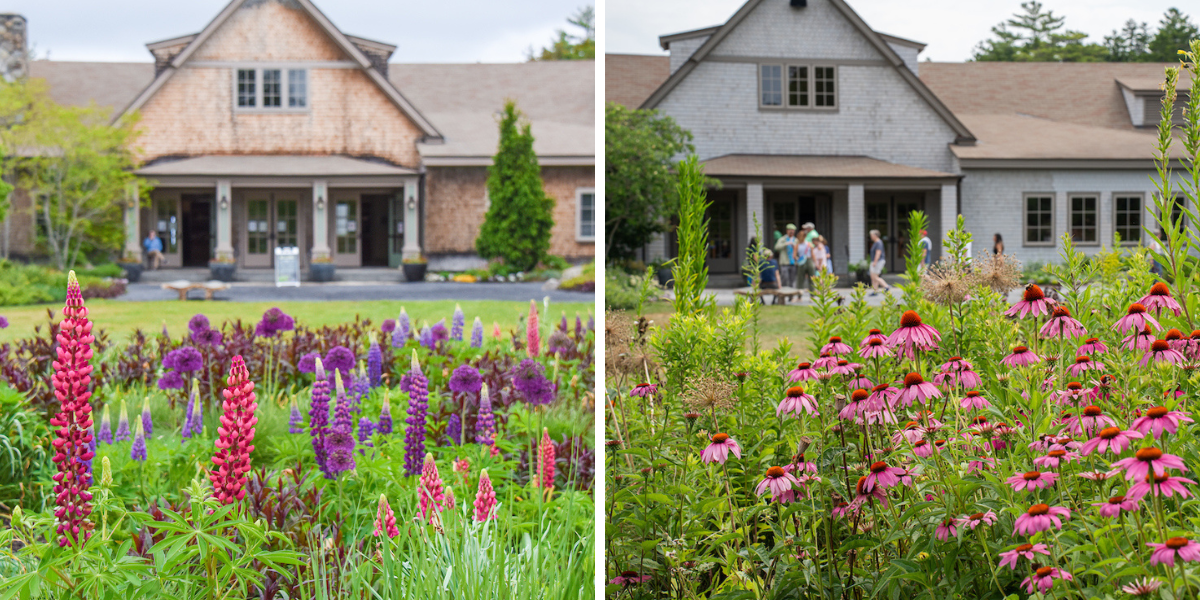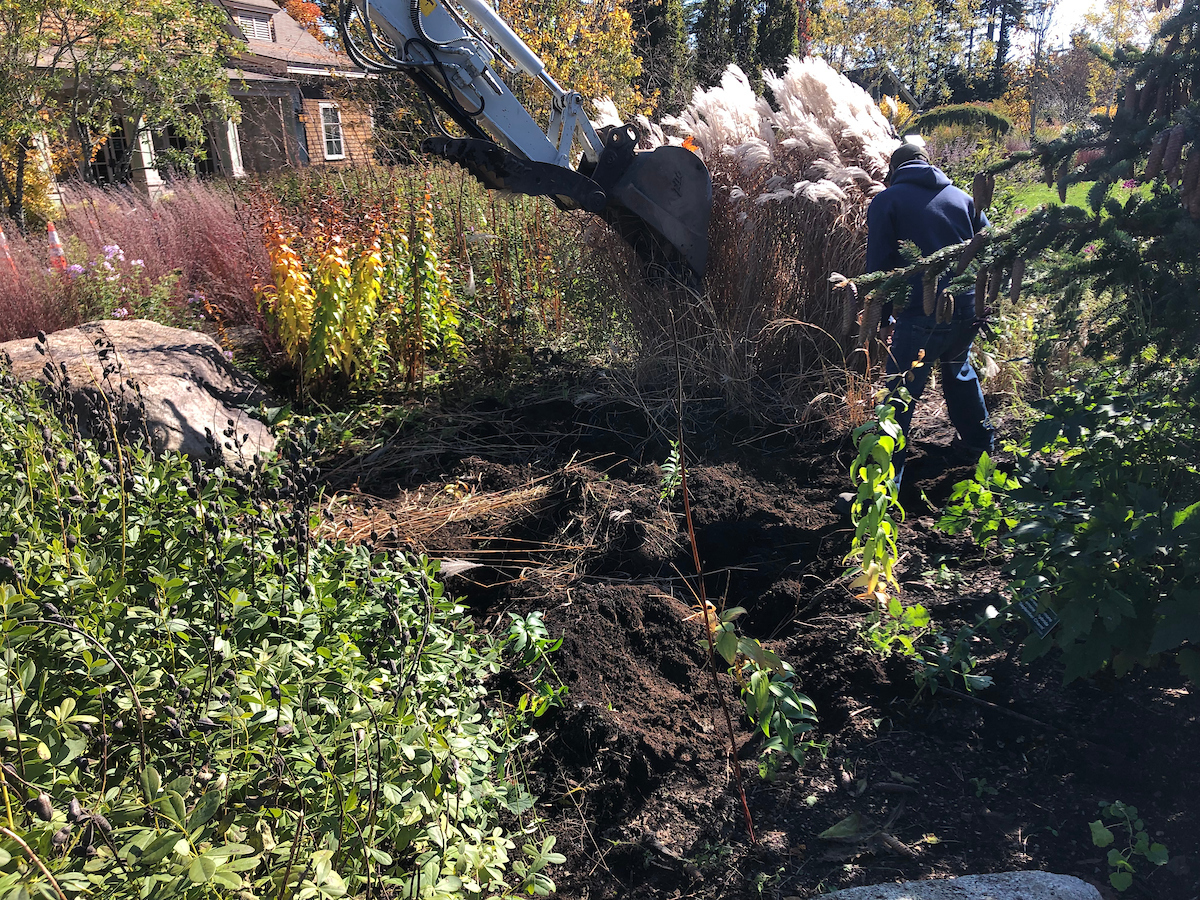As a botanical garden, our goal is to create beautiful, diverse, and inspirational garden spaces that connect people to nature. Many of our garden designs include plants that are not native to Maine, or even to North America. Non-native plants are often beautiful and dependable additions to a garden, but certain species of non-native plants may thrive too prolifically in a new place. These species can become weedy or invasive. Invasive species are species that reproduce quickly and prolifically and cause environmental or economic damage or present a threat to human health. According to the Maine Natural Areas Program, approximately 700 non-native plant species are found in Maine, of which a small fraction is considered invasive. So, how do we responsibly use non-native plants in our gardens?
As an organization, we follow the Invasive Plant Species Voluntary Code of Conduct for Botanic Gardens & Arboreta, which is endorsed by the American Public Gardens Association. This code of conduct is followed by many public gardens in the United States and lays out a series of guidelines for best addressing invasive species and preventing the spread of non-native species into the wild. To adhere to this code of conduct, we have incorporated policy into our Living Collections Policy to prevent plant species introductions from our collections to the wild, updated our living collections evaluations to include state invasiveness rankings, and revised our plant ordering process. For example, before ordering, all plant taxa selected for inclusion in our collections by horticulturists are evaluated by both the Director of Horticulture and the Curator of Living Collections against the Maine Do Not Sell list and Maine Advisory List of Invasive Species. We also keep informed about plant species that are noxious weeds or invasive in other states and weigh that information in our decision-making.
However, responsibly using non-native plants extends beyond plant ordering. Once new plant selections are approved, and the plants are in the ground, our horticulturists monitor the gardens and any immediately bordering natural areas for seed spread. Seedlings that are found spreading into natural areas or other garden beds are removed; further, the parent plants found seeding prolifically are evaluated for potential removal. Species that are added to the Maine Do Not Sell or Advisory List of Invasive Species after planting are removed from our gardens. Making the decision to remove plants, sometimes ones that are loved by our guests and volunteers, is not a decision we take lightly. However, the protection of our ecosystems and responsible management of non-native species is critically important.

Recently, we made the decision to phase out the big-leaf lupine (Lupinus polyphyllus) cultivars from our gardens. Though big-leaf lupine is iconic in Maine, it is not native and crowds out our native plant species where it has spread along roadsides and into wild meadows. Additionally, big-leaf lupine is listed as ‘potential to be invasive’ on the Maine Advisory List of Invasive Species. In accordance with our Code of Conduct and Collections Policy, and to model the ecological horticulture practices that we value and teach, we made the decision to replace the big-leaf lupine in our gardens with something equally beautiful but less prolific.
To further our commitment to responsible use and management of non-native species, the Gardens’ staff Invasive and Non-native Species Committee is tasked with advising the organization on monitoring, management and communication related to invasive plant and insect species. This committee has created an internal “species of concern” list, including non-native plant species that are not officially listed as invasive, but that we have seen spread into our natural areas regularly. We are monitoring our natural lands and removing seedlings that have escaped cultivation. We have also created management plans for the parent plants in our gardens that include techniques for reducing spread such as dead-heading seedheads before maturity or removing and replacing the parent plants.
At the Gardens, we take great care to ensure that the non-native plants that we incorporate into our gardens remain in the gardens and do not spread into our natural ecosystems. We do this through careful plant selection, monitoring of gardens and natural areas, and management of plants seen to be spreading. Non-native plants can be responsibly utilized in gardens by taking care to select species that do not spread readily and by monitoring for and managing any observed spread.
If you are interested in replacing common non-native garden plants that spread prolifically, here are some ideas. For a more comprehensive list visit the University of Maine Cooperative Extension.

Responsible replacements for prolific non-natives:
- Replace beach rose (Rosa rugosa) with Virginia rose (Rosa virginiana)
- Replace big-leaf lupine (Lupinus polyphyllus) with wild lupine (Lupinus perennis)
- Replace Japanese tree lilac (Syringa reticulata) with fringe tree (Chionanthus virginicus)
- Replace Japanese snowbell (Styrax japonicus) with Carolina silverbell (Halesia caroliniana)
- Replace sweet autumn clematis (Clematis terniflora) with virgin’s-bower (Clematis virginiana)
